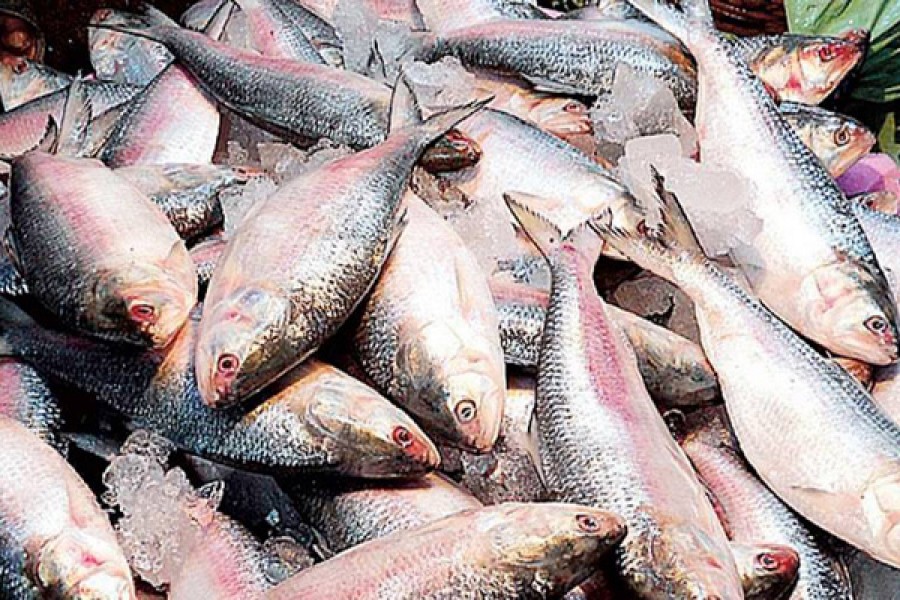22-day Hilsa ban begins: Bangladesh contributes 65pc of total global output

Published :
Updated :

22-day ban on hilsa fishing begins in Chandpur Sunday. The government every year takes the move to increase the production of the popular fish species.
The government has imposed a ban on catching, selling, hoarding and transportation of hilsa in different rivers across the country for 22 days from Sunday to protect hilsa breeding, local fisheries department officials said, adding as per the government decision, the banning also came into effect in the rivers here Sunday.
The ban covers 100 kilometres of river waters from Shatnal Upazila in Chandpur district to Char Alekjhander in Lakshmipur district, reports BSS.
Fisheries officials said the Hilsa traders, sellers, buyers and fishermen ultimately are being benefited due to the ban on Hilsa catching during the peak breeding season for last several years, increasing its production.
Among the 11 countries where hilsa is found, Bangladesh is the only country where production of this silver fish is on the rise.
Besides, Hilsa is contributing to meet the demand of protein in the country.
Md Shafiqur Rahman of Chandpur District Fisheries Department said that the period (October 1-22) is known as the peak breeding season of Hilsa.
According to a report by World Fish says, Bangladesh is the leading country in hilsa production with 65 per sent of all hilsa, while India contributes with 10-15 per cent and Myanmar 8-10 per cent. The remaining hilsa comes from other countries.
Bangladesh government started identifying breedings spots of hilsa since 2002.
The government initiated a project to conserve jatka (hilsa less than 10 inches long) in 2004. Initially, raising awareness and dissuading fishermen from catching hilsa fry was the target.
The government slapped a ban on fishing jatka and mother hilsas in five breeding zones including Chandpur, Lakkhipur, Barisal, Bhola, Patuakhali, Cox’s Bazar and Chittagong for eight months between November and June from the 2007-08 season.


 For all latest news, follow The Financial Express Google News channel.
For all latest news, follow The Financial Express Google News channel.